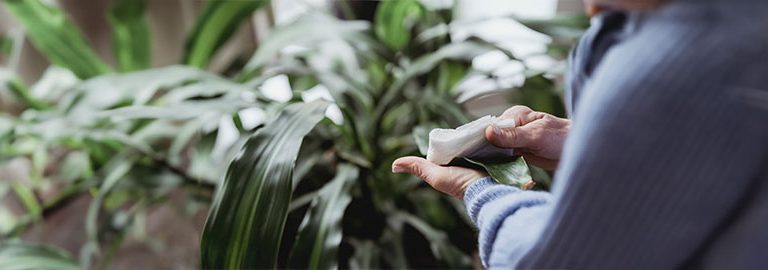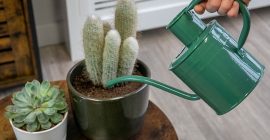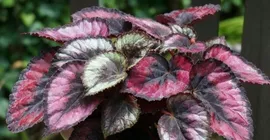Houseplants bring nature’s charm into our homes, but over time, they can accumulate dust, dirt, and grime. Cleaning your indoor greenery is not only about maintaining their appearance but also ensuring their ongoing health and vitality. Here’s a comprehensive guide on how to clean houseplants effectively and safely:
Why Clean Your Houseplants?
Regular cleaning offers several benefits:
- Improved Photosynthesis: Clean leaves allow better light absorption, aiding in the plant’s photosynthesis process
- Pest Prevention: Removing dust and debris reduces the likelihood of pests making a home on your plants
- Enhanced Aesthetics: Clean plants look more vibrant and attractive, adding beauty to your indoor space
Tools You’ll Need
- Soft cloth or sponge
- Lukewarm water
- Mild soap or plant-based insecticidal soap (if necessary)
- Spray bottle
- Cotton buds (for intricate areas)
Steps to Clean Your Houseplants
- Assess Your Plants: Different plants have varying needs when it comes to cleaning. Some plants, like succulents, have waxy surfaces, while others, like ferns, have delicate leaves. So its always best to assess the plant’s surface and structure before cleaning.
- Dust Removal: Gently wipe the leaves with a soft, damp cloth or sponge. For larger leaves, support them from underneath while cleaning to avoid damage. Remove dust from both sides of the leaves to ensure proper light absorption.
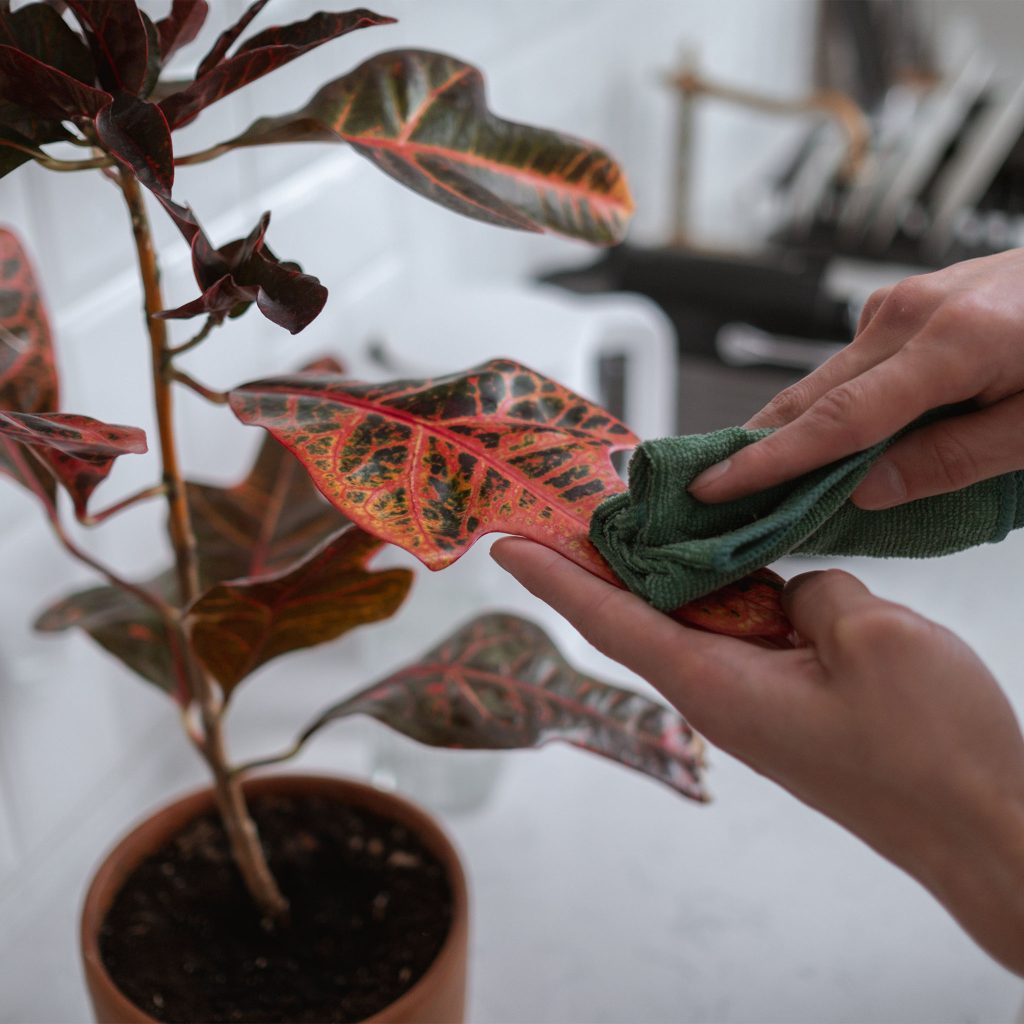
- Sticky Residue or Pests: If you notice sticky residue or pests like aphids or spider mites, use a mild soap solution. Mix a small amount of mild soap with water in a spray bottle. Test on a small part of the plant to ensure it won’t cause damage before spraying the entire plant. Wipe off the solution with a soft cloth after a few minutes.
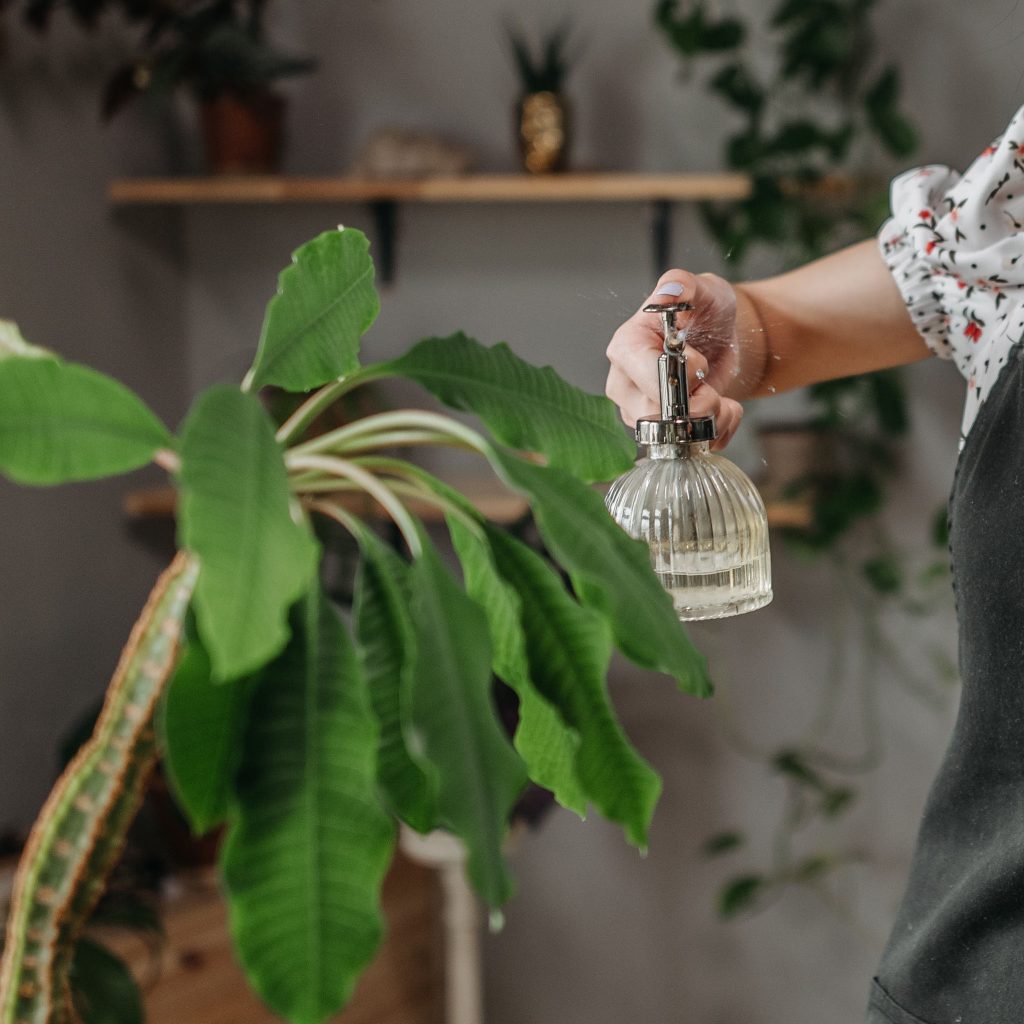
- Rinse (if necessary): For plants sensitive to soap, rinse the leaves under lukewarm water or use a damp cloth to remove any soap residue.
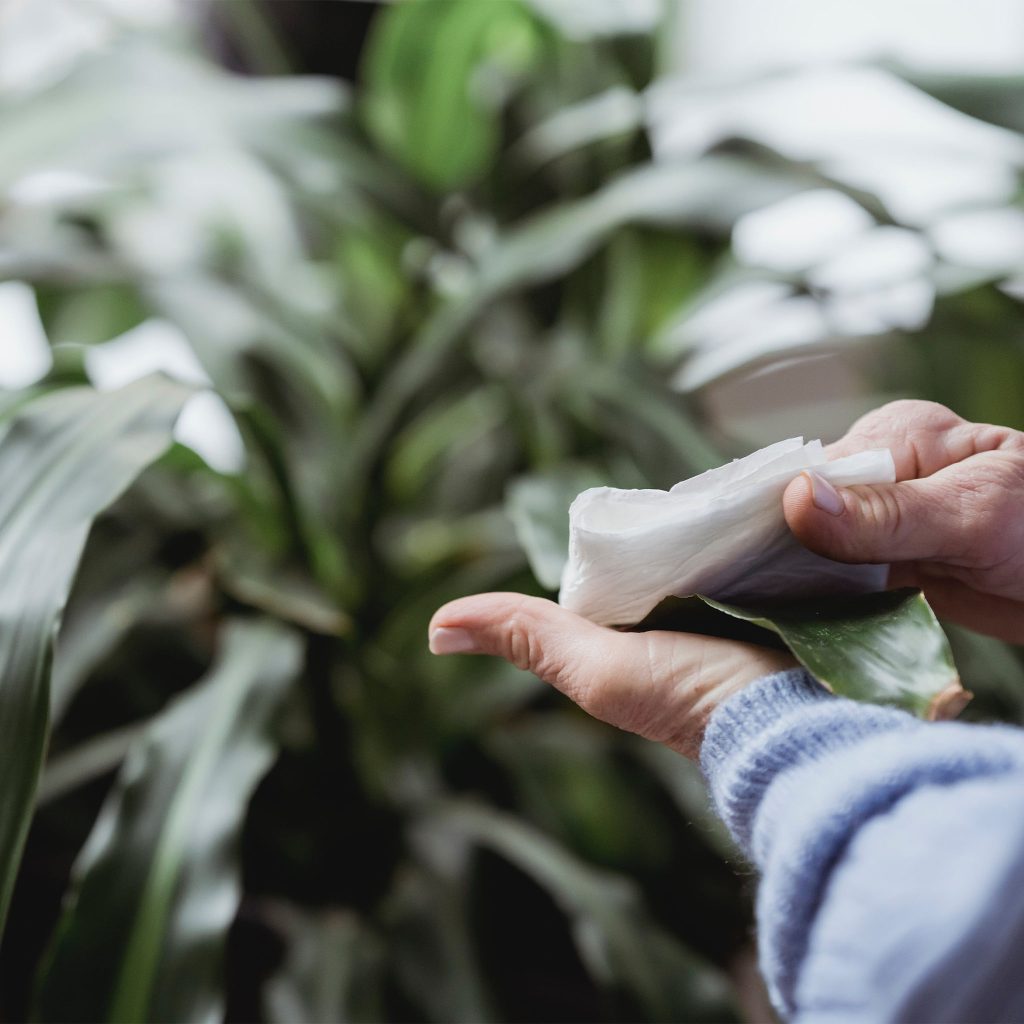
- Treat Intricate Areas: Use cotton swabs dipped in water to clean intricate areas such as leaf joints or crevices gently. Be cautious to avoid damaging delicate parts.
- Drying: Allow the plants to air dry in a well-ventilated area. Ensure they are not placed under direct sunlight immediately after cleaning, as this could cause damage to the damp leaves.
Additional Tips
- Consistency: Make cleaning a part of your regular plant care routine. Aim for monthly cleaning or more frequently if needed
- Avoid Harsh Chemicals: Steer clear of harsh chemicals or cleaners that can harm your plants
- Inspect While Cleaning: Use this time to inspect your plants for any signs of pests, diseases, or issues with their health
Cleaning your houseplants is a simple yet essential aspect of plant care. Not only does it maintain their appearance, but it also contributes to their overall well-being. With the right tools and a gentle touch, you can keep your indoor greenery thriving and looking their best, adding beauty and vitality to your home.
Check out our houseplant care range

